Abstract
1. All trials of drug therapy for intermittent claudication published in English during the period 1965-1985 were reviewed. A total of 75 trials had studied 33 different pharmacological agents. Treadmill exercise, the most reproducible method of evaluating symptoms in this condition, was used in 49% of trials. 2. Oxpentifylline was the drug that had been most frequently studied. In seven placebo-controlled trials the average response to oxpentifylline, compared with placebo and weighted for sample-size, was 65% improvement in claudication distance. There was, however, a significant negative relation between sample-size and response (rs = -0.79, P less than 0.05), suggesting that this estimate was likely to have been biased by non-publication of negative results. 3. One third of all trials were uncontrolled; 84% of these reported benefit from drug treatment, compared with 32% of placebo-controlled trials (P less than 0.001). Sample-sizes varied from seven to 227 patients; 31% of trials reported data from less than 20 patients and these were likely to have had insufficient statistical power. 4. Overall, 57 of the 75 trials (76%) had at least one of the following deficiencies: an uncontrolled design; not double-blind; failure to use treadmill exercise; less than 20 patients included in the analysis. Thus, a priori three-quarters of all trials were unlikely to have made a satisfactory assessment of drug efficacy. 5. The information available does not establish convincingly that any drug consistently improves exercise performance in intermittent claudication. In view of the deficiencies in previous trials, we propose guidelines for future studies with regard to trial design, sample-size and methods of exercise testing.
Full text
PDF
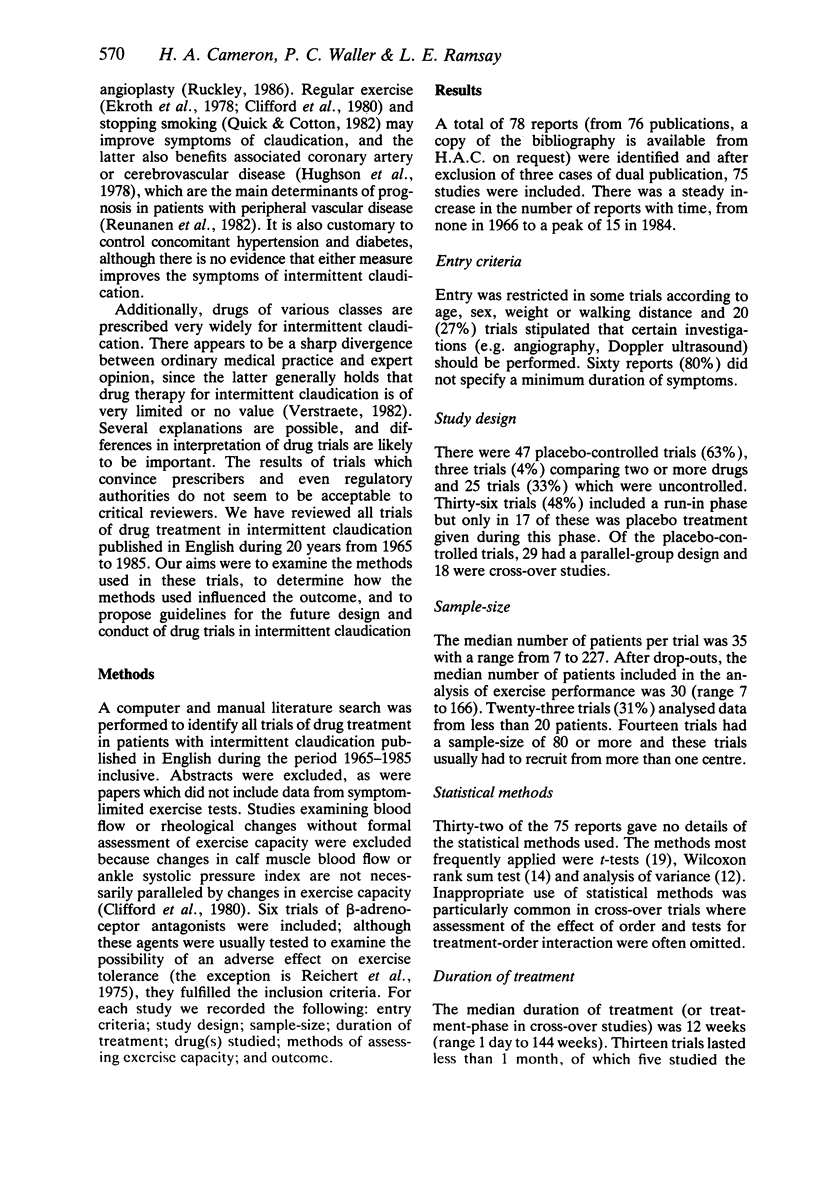
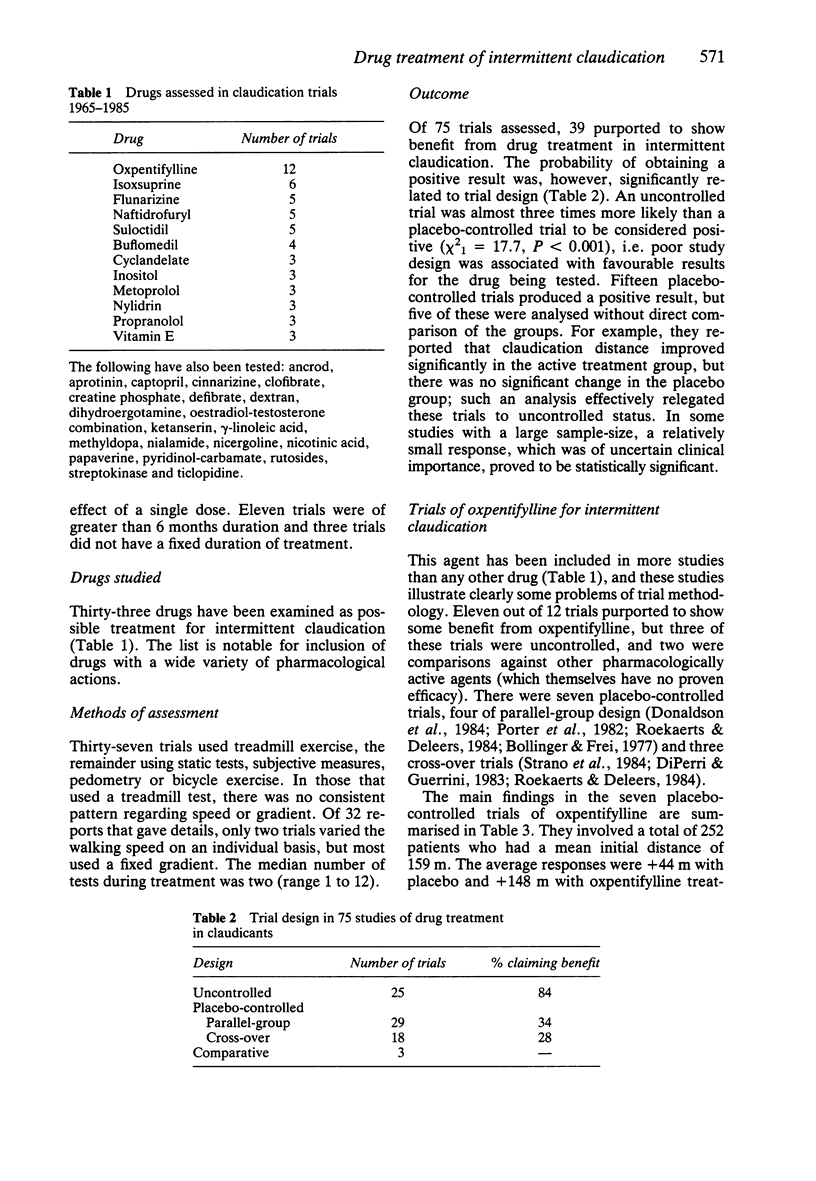
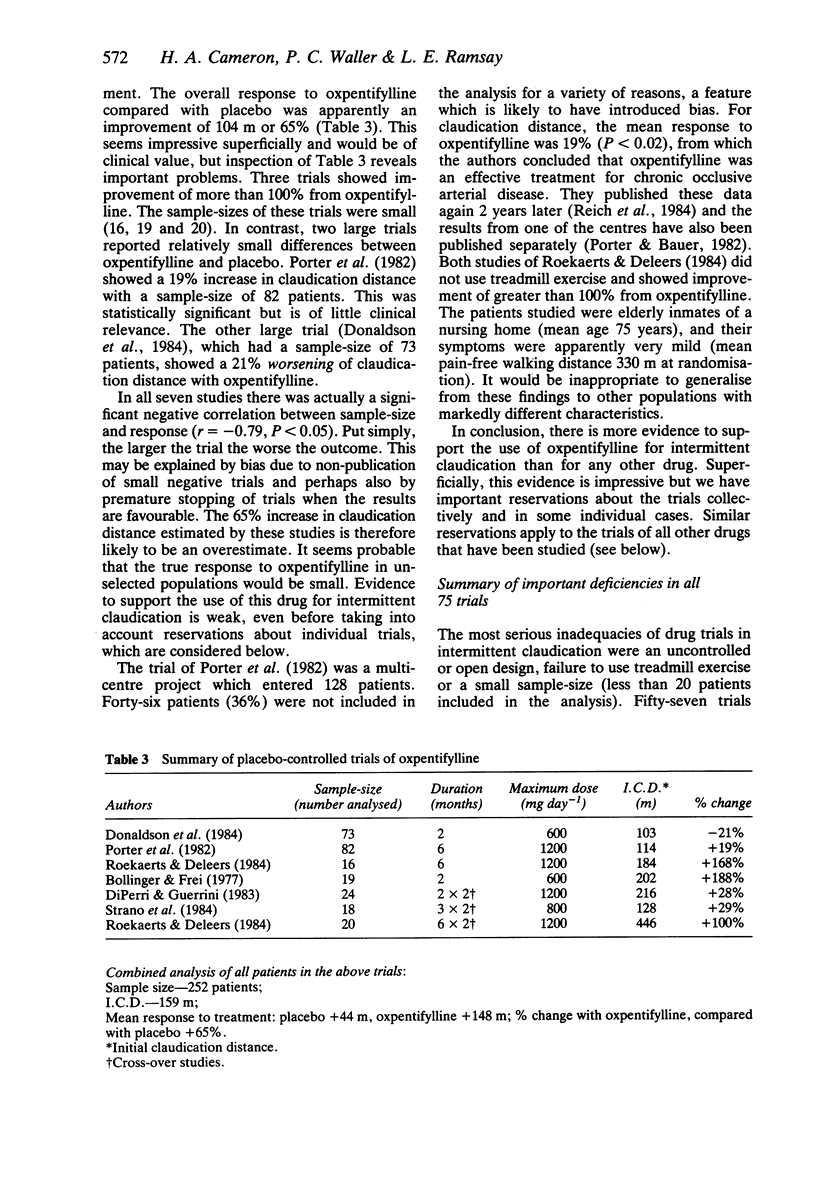
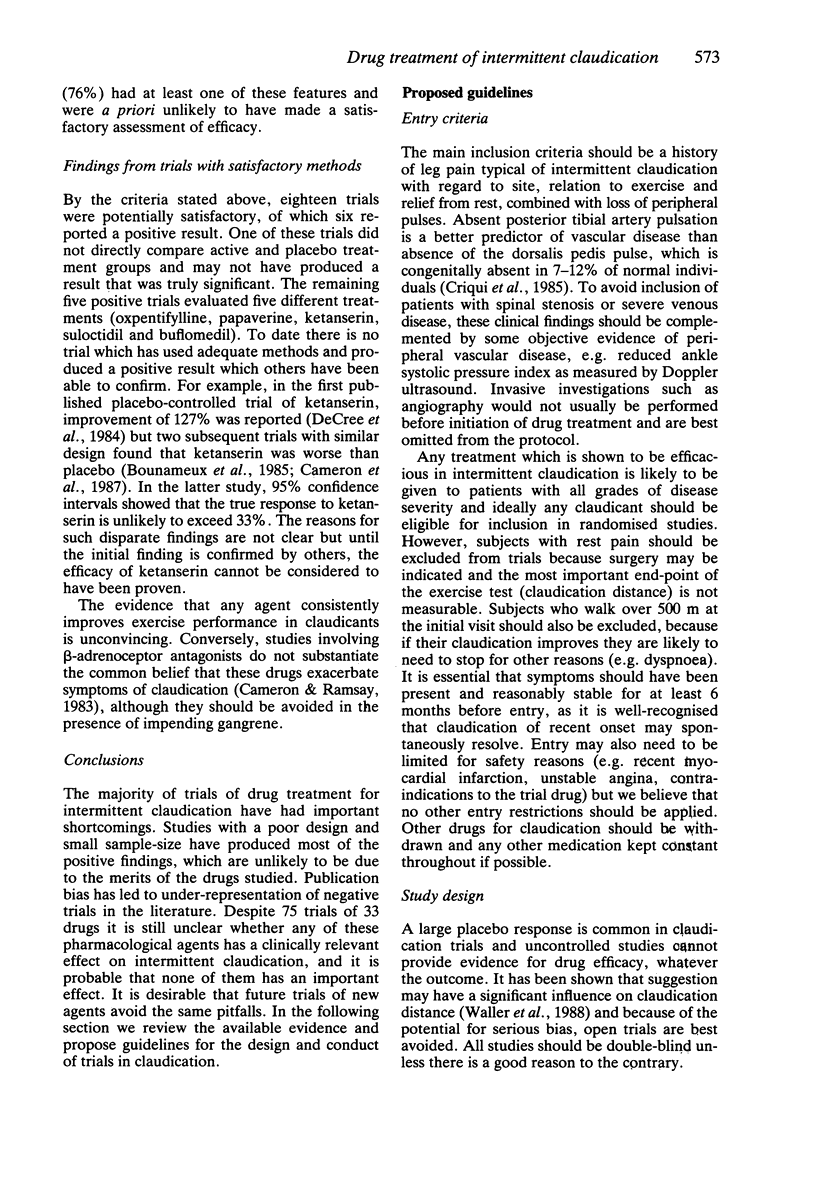
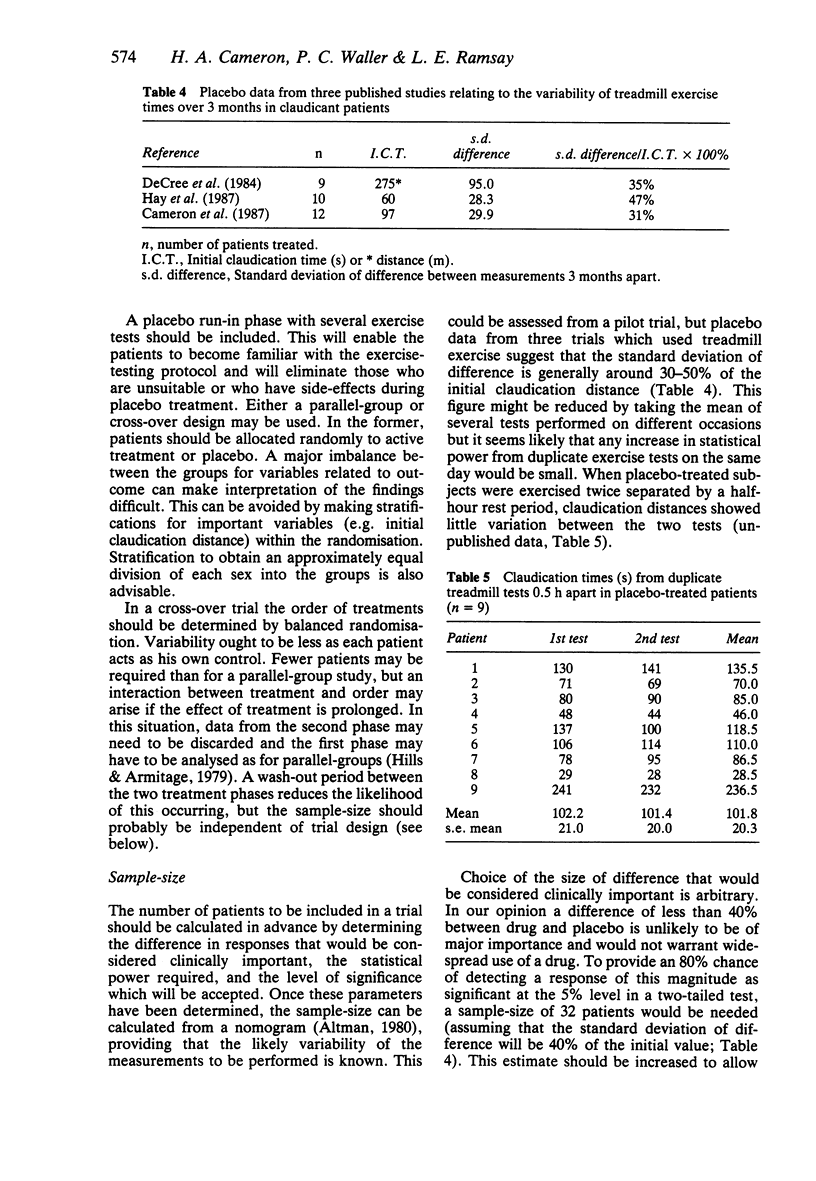
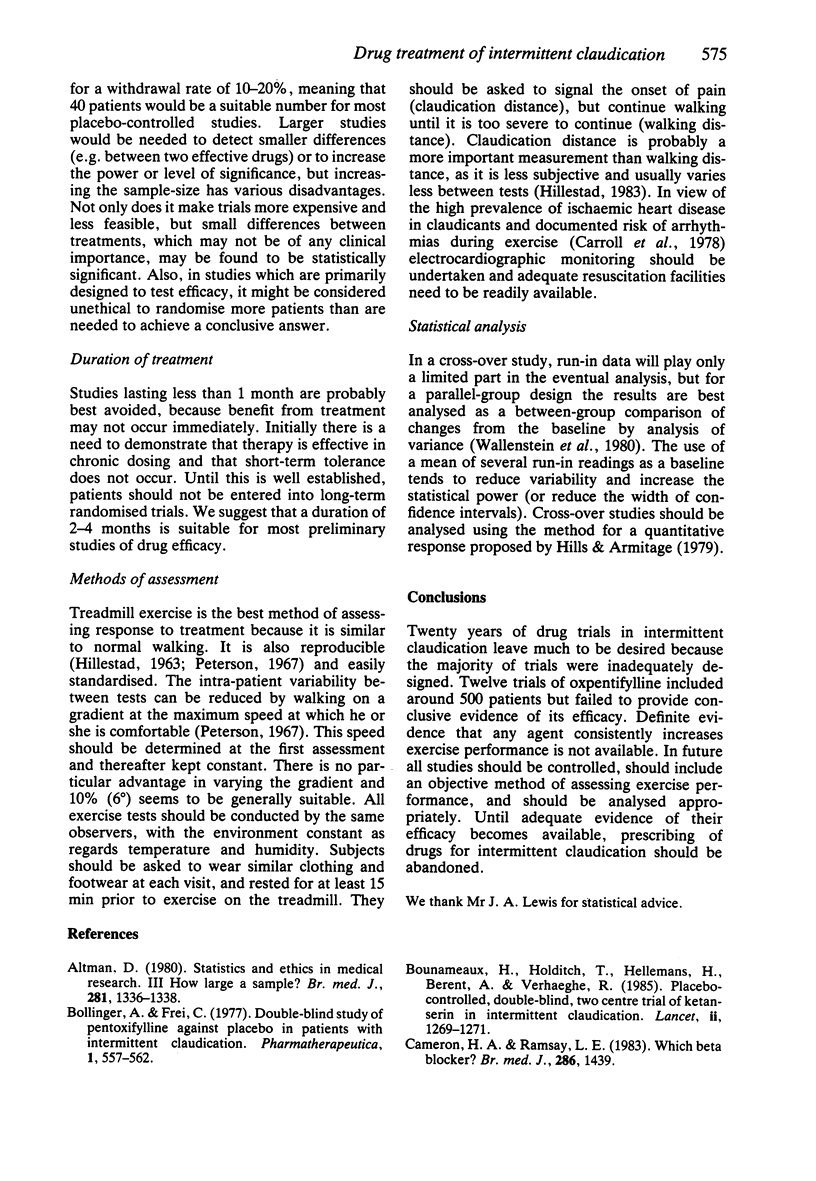
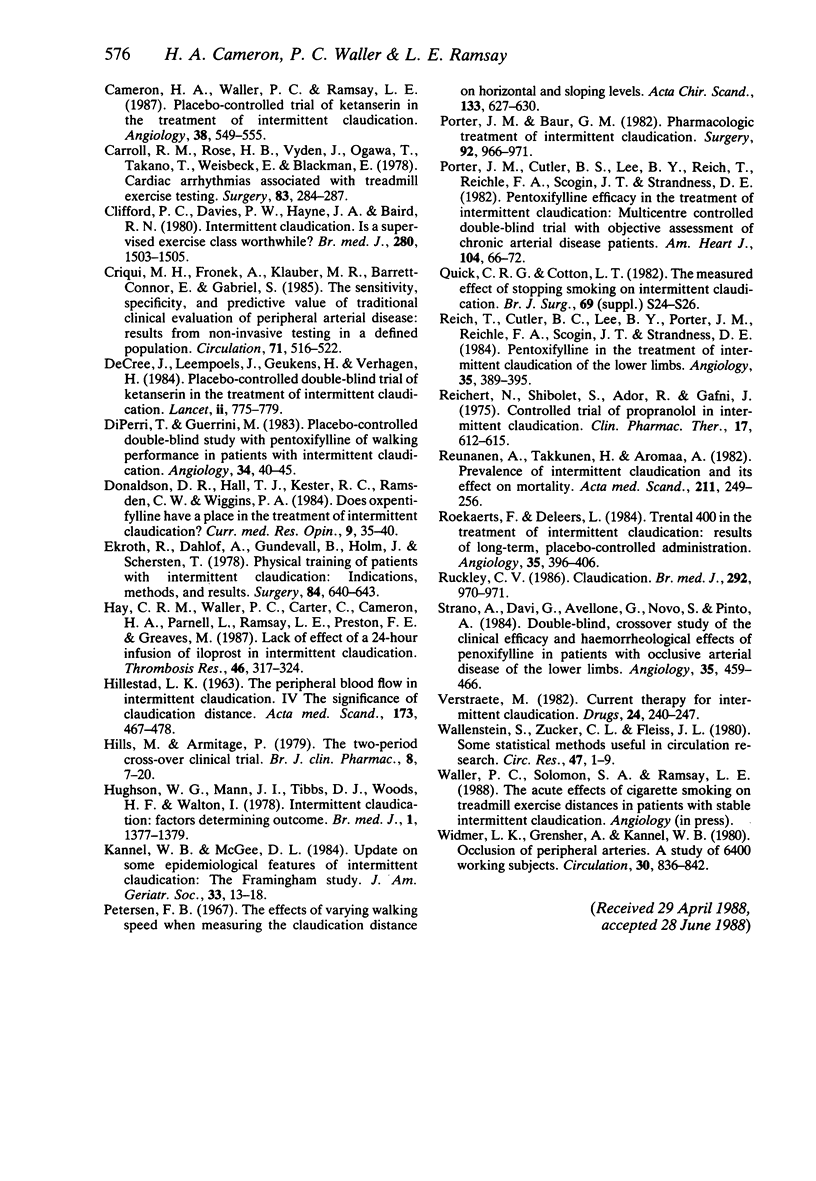
Selected References
These references are in PubMed. This may not be the complete list of references from this article.
- Altman D. G. Statistics and ethics in medical research: III How large a sample? Br Med J. 1980 Nov 15;281(6251):1336–1338. doi: 10.1136/bmj.281.6251.1336. [DOI] [PMC free article] [PubMed] [Google Scholar]
- Bounameaux H., Holditch T., Hellemans H., Berent A., Verhaeghe R. Placebo-controlled, double-blind, two-centre trial of ketanserin in intermittent claudication. Lancet. 1985 Dec 7;2(8467):1268–1271. doi: 10.1016/s0140-6736(85)91553-3. [DOI] [PubMed] [Google Scholar]
- Cameron H. A., Waller P. C., Ramsay L. E. Placebo-controlled trial of ketanserin in the treatment of intermittent claudication. Angiology. 1987 Jul;38(7):549–555. doi: 10.1177/000331978703800708. [DOI] [PubMed] [Google Scholar]
- Carroll R. M., Rose H. B., Vyden J., Ogawa T., Takano T., Weisbeck E., Blackman E. Cardiac arrhythmias associated with treadmill claudication testing. Surgery. 1978 Mar;83(3):284–287. [PubMed] [Google Scholar]
- Clifford P. C., Davies P. W., Hayne J. A., Baird R. N. Intermittent claudication: is a supervised exercise class worth while? Br Med J. 1980 Jun 21;280(6230):1503–1505. doi: 10.1136/bmj.280.6230.1503. [DOI] [PMC free article] [PubMed] [Google Scholar]
- Criqui M. H., Fronek A., Klauber M. R., Barrett-Connor E., Gabriel S. The sensitivity, specificity, and predictive value of traditional clinical evaluation of peripheral arterial disease: results from noninvasive testing in a defined population. Circulation. 1985 Mar;71(3):516–522. doi: 10.1161/01.cir.71.3.516. [DOI] [PubMed] [Google Scholar]
- De Cree J., Leempoels J., Geukens H., Verhaegen H. Placebo-controlled double-blind trial of ketanserin in treatment of intermittent claudication. Lancet. 1984 Oct 6;2(8406):775–779. doi: 10.1016/s0140-6736(84)90704-9. [DOI] [PubMed] [Google Scholar]
- Di Perri T., Guerrini M. Placebo controlled double blind study with pentoxifylline of walking performance in patients with intermittent claudication. Angiology. 1983 Jan;34(1):40–45. doi: 10.1177/000331978303400105. [DOI] [PubMed] [Google Scholar]
- Donaldson D. R., Hall T. J., Kester R. C., Ramsden C. W., Wiggins P. A. Does oxpentifylline ('Trental') have a place in the treatment of intermittent claudication? Curr Med Res Opin. 1984;9(1):35–40. doi: 10.1185/03007998409109556. [DOI] [PubMed] [Google Scholar]
- Ekroth R., Dahllöf A. G., Gundevall B., Holm J., Scherstén T. Physical training of patients with intermittent claudication: indications, methods, and results. Surgery. 1978 Nov;84(5):640–643. [PubMed] [Google Scholar]
- HILLESTAD L. K. The peripheral blood flow in intermittent claudication. IV. The significance of the claudication distance. Acta Med Scand. 1963 Apr;173:467–478. doi: 10.1111/j.0954-6820.1963.tb17430.x. [DOI] [PubMed] [Google Scholar]
- Hay C. R., Waller P. C., Carter C., Cameron H. A., Parnell L., Ramsay L. E., Preston F. E., Greaves M. Lack of effect of a 24-hour infusion of iloprost in intermittent claudication. Thromb Res. 1987 Apr 15;46(2):317–324. doi: 10.1016/0049-3848(87)90293-3. [DOI] [PubMed] [Google Scholar]
- Hills M., Armitage P. The two-period cross-over clinical trial. Br J Clin Pharmacol. 1979 Jul;8(1):7–20. doi: 10.1111/j.1365-2125.1979.tb05903.x. [DOI] [PMC free article] [PubMed] [Google Scholar]
- Hughson W. G., Mann J. I., Tibbs D. J., Woods H. F., Walton I. Intermittent claudication: factors determining outcome. Br Med J. 1978 May 27;1(6124):1377–1379. doi: 10.1136/bmj.1.6124.1377. [DOI] [PMC free article] [PubMed] [Google Scholar]
- Kannel W. B., McGee D. L. Update on some epidemiologic features of intermittent claudication: the Framingham Study. J Am Geriatr Soc. 1985 Jan;33(1):13–18. doi: 10.1111/j.1532-5415.1985.tb02853.x. [DOI] [PubMed] [Google Scholar]
- Petersen F. B. The effects of varying walking speeds when measuring the claudication distance on horizontal and sloping levels. Acta Chir Scand. 1967;133(8):627–630. [PubMed] [Google Scholar]
- Porter J. M., Bauer G. M. Pharmacologic treatment of intermittent claudication. Surgery. 1982 Dec;92(6):966–971. [PubMed] [Google Scholar]
- Porter J. M., Cutler B. S., Lee B. Y., Reich T., Reichle F. A., Scogin J. T., Strandness D. E. Pentoxifylline efficacy in the treatment of intermittent claudication: multicenter controlled double-blind trial with objective assessment of chronic occlusive arterial disease patients. Am Heart J. 1982 Jul;104(1):66–72. doi: 10.1016/0002-8703(82)90642-1. [DOI] [PubMed] [Google Scholar]
- Quick C. R., Cotton L. T. The measured effect of stopping smoking on intermittent claudication. Br J Surg. 1982 Jun;69 (Suppl):S24–S26. doi: 10.1002/bjs.1800691309. [DOI] [PubMed] [Google Scholar]
- Reich T., Cutler B. C., Lee B. Y., Porter J. M., Reichle F. A., Scogin J. T., Strandness D. E. Pentoxifylline in the treatment of intermittent claudication of the lower limbs. Angiology. 1984 Jul;35(7):389–395. doi: 10.1177/000331978403500701. [DOI] [PubMed] [Google Scholar]
- Reichert N., Shibolet S., Adar R., Gafni J. Controlled trial of propranolol in intermittent claudication. Clin Pharmacol Ther. 1975 May;17(5):612–615. doi: 10.1002/cpt1975175612. [DOI] [PubMed] [Google Scholar]
- Reunanen A., Takkunen H., Aromaa A. Prevalence of intermittent claudication and its effect on mortality. Acta Med Scand. 1982;211(4):249–256. doi: 10.1111/j.0954-6820.1982.tb01939.x. [DOI] [PubMed] [Google Scholar]
- Roekaerts F., Deleers L. Trental 400 in the treatment of intermittent claudication: results of long-term, placebo-controlled administration. Angiology. 1984 Jul;35(7):396–406. doi: 10.1177/000331978403500702. [DOI] [PubMed] [Google Scholar]
- Ruckley V. C. Claudication. Br Med J (Clin Res Ed) 1986 Apr 12;292(6526):970–971. doi: 10.1136/bmj.292.6526.970. [DOI] [PMC free article] [PubMed] [Google Scholar]
- Strano A., Davi G., Avellone G., Novo S., Pinto A. Double-blind, crossover study of the clinical efficacy and the hemorheological effects of pentoxifylline in patients with occlusive arterial disease of the lower limbs. Angiology. 1984 Jul;35(7):459–466. doi: 10.1177/000331978403500709. [DOI] [PubMed] [Google Scholar]
- Verstraete M. Current therapy for intermittent claudication. Drugs. 1982 Sep;24(3):240–247. doi: 10.2165/00003495-198224030-00004. [DOI] [PubMed] [Google Scholar]
- WIDMER L. K., GREENSHER A., KANNEL W. B. OCCLUSION OF PERIPHERAL ARTERIES: A STUDY OF 6,400 WORKING SUBJECTS. Circulation. 1964 Dec;30:836–852. doi: 10.1161/01.cir.30.6.836. [DOI] [PubMed] [Google Scholar]
- Wallenstein S., Zucker C. L., Fleiss J. L. Some statistical methods useful in circulation research. Circ Res. 1980 Jul;47(1):1–9. doi: 10.1161/01.res.47.1.1. [DOI] [PubMed] [Google Scholar]


